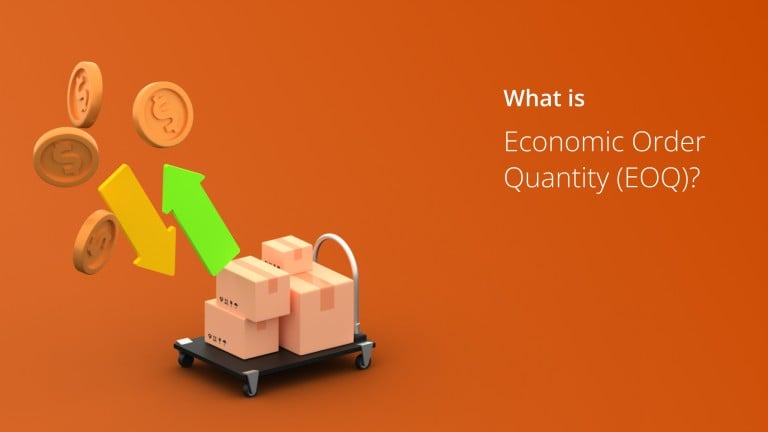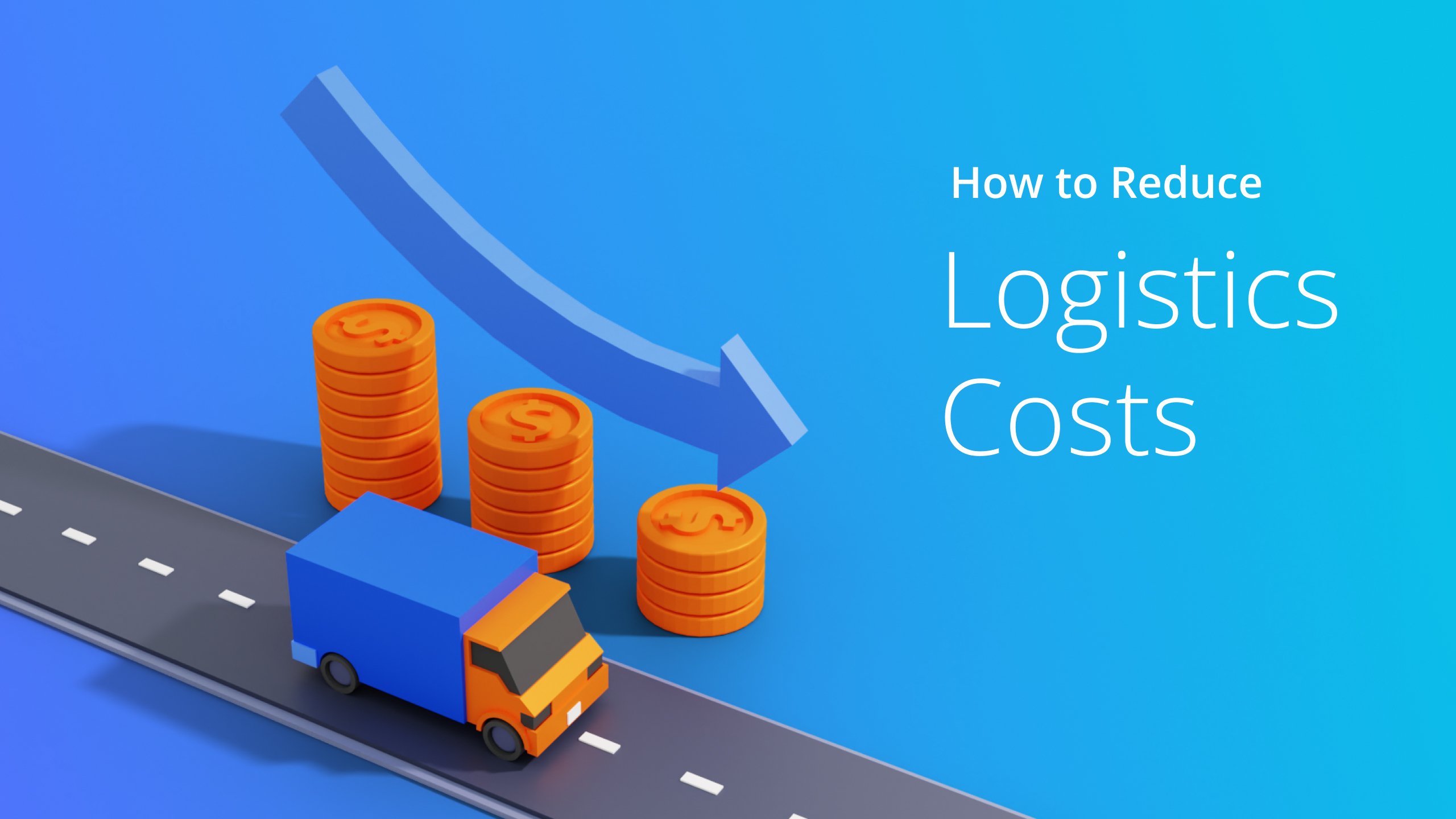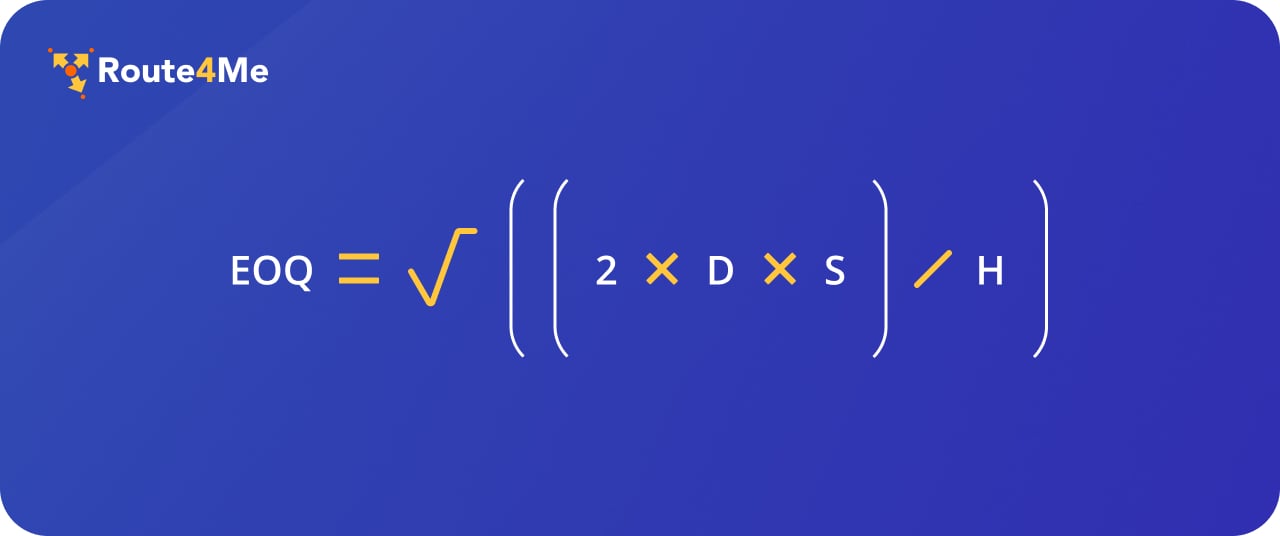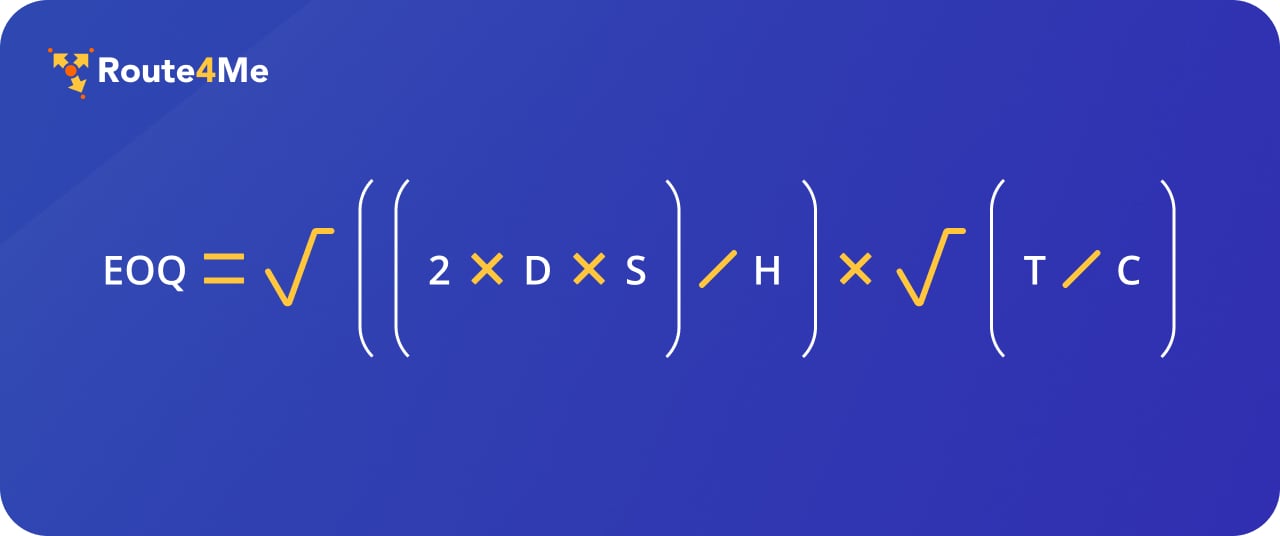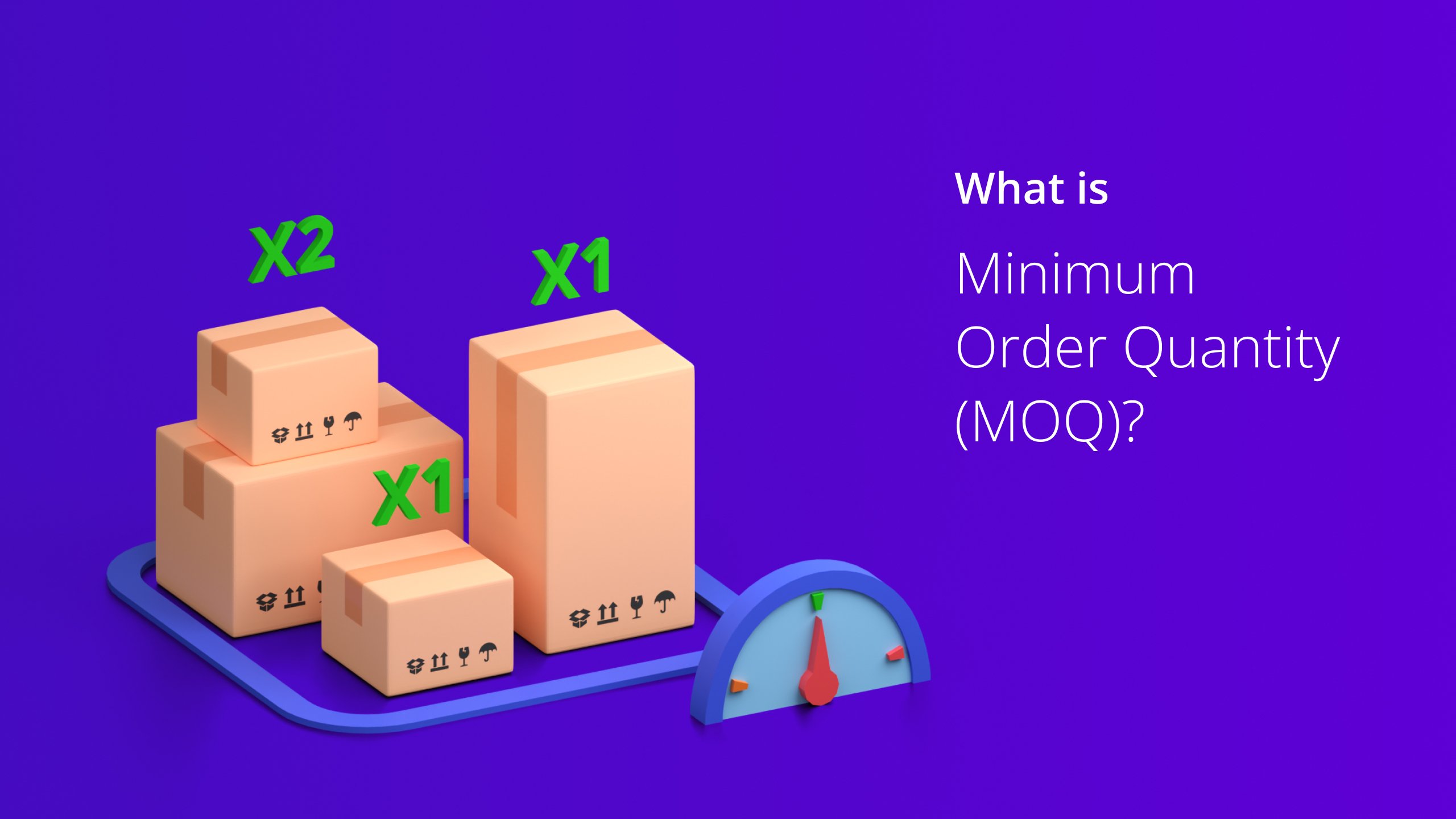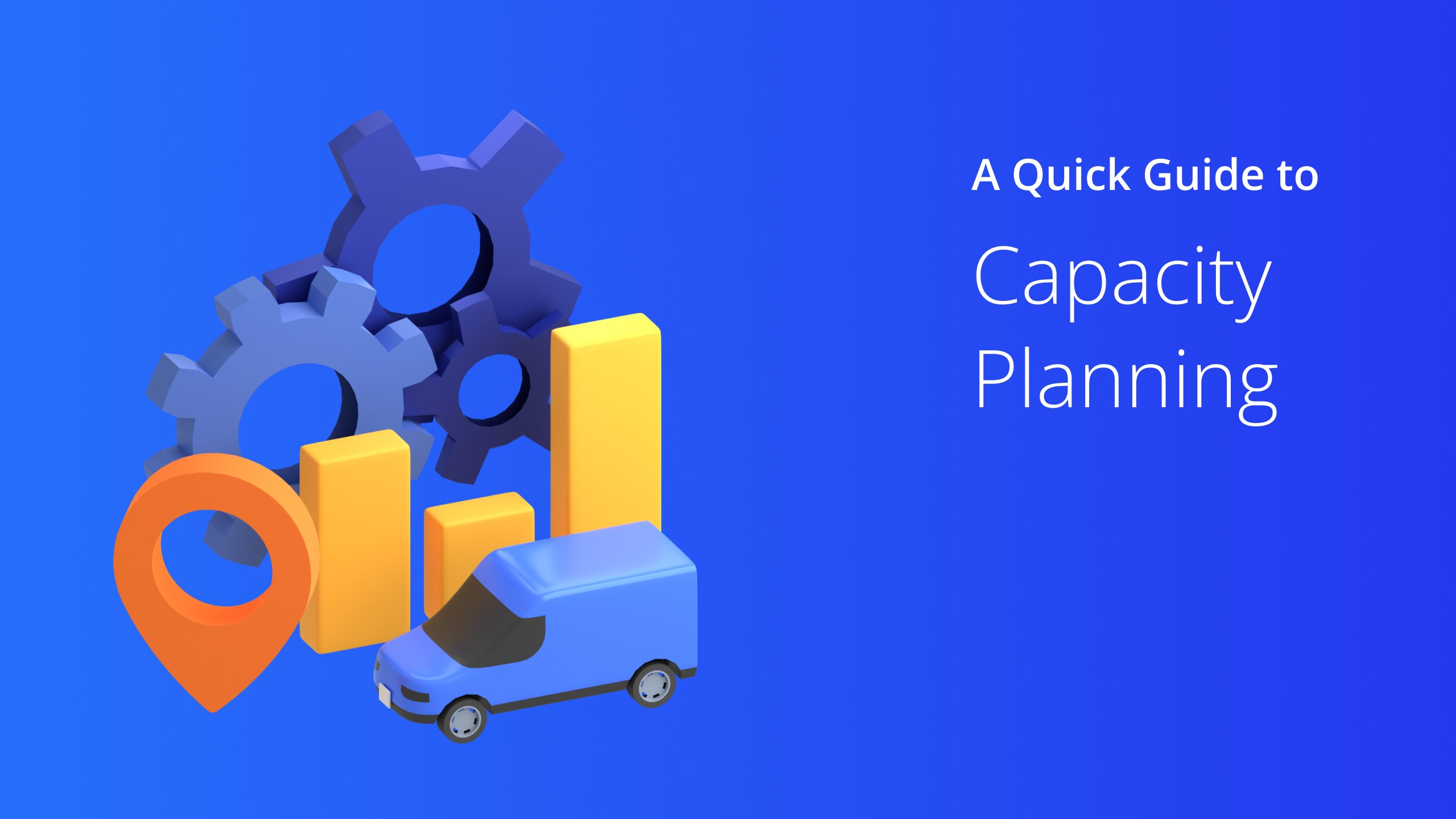Inventory management can be challenging for smaller companies that lack the financial resources of larger competitors. And one of the best ways to optimize inventory without breaking the bank is by calculating economic order quantity (EOQ).
In this blog post, we look at EOQ and how small and medium-sized businesses can apply its fundamentals to manage their inventory levels more effectively.
We’ll discuss the benefits EOQ can bring to organizations and provide practical tips on implementing EOQ in your business. So if you are looking for ways to maximize your profits while optimizing your inventory levels, read on.
Table of Contents
What is Economic Order Quantity (EOQ)?
Economic Order Quantity (EOQ) is a supply chain management concept that helps calculate the optimal order quantity for inventory replenishment.
It helps businesses optimize their inventory levels to minimize costs associated with procuring goods, warehousing them, and fulfilling orders.
The EOQ model considers variables such as expected demand, carrying cost of inventory, and ordering cost to calculate an optimal ordering schedule for each item in the company’s stock.
By utilizing the EOQ model, you can more accurately predict future purchasing needs while minimizing the total cost of ownership.
The EOQ model has a wide range of applications in different industries. For example, manufacturing businesses leverage the model to optimize their production scheduling by establishing economic production runs.
Similarly, it can help retailers optimize their restocking requirements by calculating the right amount of inventory for each product line.
In addition, the information obtained through EOQ analysis can also help transportation companies better plan their delivery routes and fuel usage requirements.
Want To See For Yourself How Route4Me Can Help You Boost Profits?

Why Should You Calculate EOQ?
Below are several benefits you can reap by calculating EOQ.
Minimize Inventory Costs
EOQ helps you minimize inventory costs by optimizing order quantities, reducing holding costs, and lowering ordering costs. Plus, it improves demand forecasting, enhances operational efficiency, and helps you take advantage of quantity discounts.
This enables you to maintain optimal inventory levels that meet customer demand while minimizing costs associated with inventory management.
Simplify Inventory Management
EOQ simplifies inventory management by providing a structured approach to determine optimal order quantities, reorder points, and inventory levels.
It enables informed decision-making, enhances visibility into inventory-related costs and performance metrics, and can streamline supplier relationships, making inventory management easier and more effective for businesses.
Meet Customer Demands
EOQ helps optimize your inventory levels, order quantities, and reorder points, enabling you to meet customer demands effectively.
It helps avoid stockouts, reduces lead time variability, and optimizes replenishment frequency. Plus, you can manage inventory carrying costs efficiently and improve order fulfillment speed – all these contribute to meeting customer demands and enhancing customer satisfaction.
How to Calculate Economic Order Quantity (EOQ)
The EOQ formula is calculated using the following variables:
Where: D = Annual demand (quantity of product units sold or used within a year)
S = Ordering cost (cost of placing an order, including administrative fees, transportation costs, etc.)
H = Holding cost (cost of holding one unit of inventory for a year, including storage costs, insurance, taxes, obsolescence, etc.)
Additionally, if there is a lead time involved (time between placing an order and receiving the inventory), it can be included in the EOQ calculation as follows:
Where: T = Lead time (time taken for the inventory to be delivered after placing an order),
C = Carrying cost per unit per time period (holding cost divided by the length of the lead time)
Example Calculation: Consider an example of a manufacturing business that produces and sells widgets. The business has the following information:
Annual demand (D) = 10,000 units
Ordering cost (S) = $100 per order
Holding cost (H) = $5 per unit per year
Lead time (T) = 7 days Carrying cost per unit per time period
(C) = $5/365 per day (assuming 365 days in a year)
Step 1: Gather the necessary data: D = 10,000 units S = $100 per order H = $5 per unit per year T = 7 days C = $5/365 per day
Step 2: Plug the values into the EOQ formula: EOQ = √((2 * 10,000 * 100) / 5) * √(7 / ($5/365))
Step 3: Simplify the equation: EOQ = √(2,000,000) * √(7 * 365 / 5)
Step 4: Calculate the square roots: EOQ = 1,414.21 * 28.32
Step 5: Multiply the results: EOQ = 40,000 units (rounded to the nearest whole number)
So, the EOQ for the widgets is 40,000 units. This means the business should place orders of 40,000 units at a time. This is to minimize the total inventory cost, considering the given parameters of annual demand, ordering cost, holding cost, lead time, and carrying cost per unit per time period.
Challenges of Calculating EOQs
Here are some limitations and challenges that arise when calculating EOQ, which can affect the overall efficiency of the supply chain.
Inaccurate Data
One of the main challenges in calculating EOQ is the availability of accurate and sufficient data. EOQ relies on accurate data such as demand rate, holding costs, and ordering costs. However, obtaining valid data can be difficult, especially for new products or products with fluctuating demand.
Inaccurate data can result in incorrect EOQ calculations and inefficient inventory management decisions. For example, if the demand rate is overestimated, it may lead to overstocking, increasing holding costs, obsolescence, or stockouts.
On the other hand, if the demand rate is underestimated, it may lead to stockouts and lost sales, negatively impacting customer satisfaction and revenue.
Inability to Consider Unpredictable Demand
Another limitation of EOQ is its inability to account for changing or unpredictable demands for the product. Product demand can be highly volatile and subject to various external factors, such as changing consumer preferences, market trends, and economic conditions.
EOQ assumes a constant demand rate, which may not reflect the actual demand fluctuations, leading to suboptimal order placement decisions.
For example, during peak seasons or promotional events, the demand for a product may increase suddenly, leading to stockouts if EOQ is not adjusted accordingly.
Conversely, demand may decrease during slow seasons or economic downturns, leading to excess inventory if EOQ is not revised accordingly.
Inventory Shortage
Inventory shortages or stockouts can significantly impact EOQ calculations. Stockouts can result in lost sales, reduced customer satisfaction, and increased costs due to expedited shipping or emergency orders to replenish inventory.
EOQ does not consider the cost of stockouts, and therefore, stockouts can disrupt the order placement process and result in suboptimal EOQ calculations.
For example, if stockouts occur frequently, the EOQ may need to be revised to consider the cost of stockouts and maintain adequate safety stock levels to mitigate stockouts.
Variations in Production Capacity
EOQ assumes a constant production rate, but production capacity may vary due to machine breakdowns, labor shortages, or production scheduling changes.
If production capacity is not considered in EOQ calculations, it can result in overstocking or stockouts. For example, if production capacity is temporarily reduced, EOQ may need to be adjusted to avoid overstocking due to lower production output.
Business Growth
As a company grows, demand may increase, and economies of scale may be realized, resulting in changes in EOQ.
Similarly, demand may decrease during business contractions, and inventory levels may need to be adjusted to avoid excess inventory. Failure to account for business growth or contraction can result in inventory imbalances and increased costs.
Seasonal Demand
Many products have seasonality patterns where demand varies significantly based on the time of the year, such as holiday seasons or weather-related demands. EOQ may need to be adjusted for seasonality effects to avoid stockouts or excess inventory.
For example, if a product has a peak demand during the summer, EOQ may need to be adjusted to maintain higher inventory levels.
Company Strategies
Lastly, changes in company strategies may affect the EOQ calculation. For example, if a manufacturing enterprise adopts a just-in-time (JIT) inventory management system, the EOQ calculation may become irrelevant.
JIT aims to minimize inventory holding costs by producing and delivering products just in time to meet customer demand. Therefore, if a company adopts a JIT system, it may no longer need to calculate the EOQ.
Frequently Asked Questions (FAQs) about Economic Order Quantity (EOQ)
What are the 3 components of Economic Order Quantity?
What is EOQ calculator?
Final Thoughts about Economic Order Quantity
To conclude, the Economic Order Quantity (EOQ) is a critical concept in inventory management that helps you optimize ordering and holding costs while maintaining adequate inventory levels.
You can use the EOQ formula to make informed decisions regarding inventory replenishment and avoid stockouts and overstocking.
In this blog post, we’ve discussed the EOQ formula and the various factors that influence it, such as ordering costs, holding costs, and demand. Plus, we’ve shared the advantages and challenges of EOQ.
So if you’re a company looking to maximize your efficiency while minimizing costs, look no further than economic order quantity. Take action today by learning more about how this formula works and how you can use it in your business or manufacturing processes.
Want To See For Yourself How Route4Me Can Help You Boost Profits?

